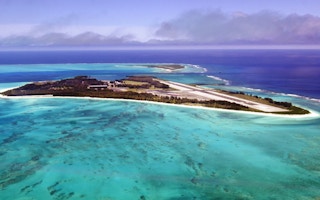The Pacific region has a stunning level of fragility related to fossil fuel dependency and world-record high electricity costs. In many Pacific states, particularly small ones, you cannot escape a big and noisy power generation plant with adjacent fuel tanks located in the middle of island.
At present, Pacific states and economies are largely dependent on hydrocarbons for electricity. Imported fuel is over 90 per cent of the energy mix and costs about 75 per cent of power utilities’ operating costs. Given the size of economies in the Pacific, hydrocarbons remain one of their largest imports.
As many Pacific utilities are generating electricity from imported fossil fuel, they are exposed to a significant liquidity gap due to high technical losses, poor collections and other operational deficiencies. With very high tariffs for electricity, power utilities in many Pacific states rely on direct cash injections from the state at about 30 per cent of revenues to offset inefficient and loss-making generation from fossil fuel.
Inevitably, this creates a vicious energy-subsidy circle that is often compensated by donors’ grants and assistance programs.
Although all Pacific states declare targets for mainstreaming renewable energy in the long term, a stark reality is that fossil fuel remains a much more serious and immediate threat to their resilience and sustainability than anything else. Every day this continues compounds the losses both financially and economically for the people of the Pacific.
When looking at what is paid for imported fuel, end user tariffs and consumers’ ability to pay for electricity, there is no doubt that the Pacific energy community needs a more aggressive action plan. The energy mix needs to be restructured by prioritising renewable energy and eventually becoming the world’s first fossil-fuel-free states.
Here are three steps needed to bring about this change:
1. Let accountants to tell the truth.
The present “business as usual” role of power utilities should be examined with a close look at the actual cost of generating and supplying electricity counted in dollar value. Utilities and key stakeholders must know how much is actually spent in real terms for running power generation assets in the Pacific.
Accounting will help determine a true cost of supply based on a revenue required model. This would factor in the actual cost of fuel (not subsidised), the cost of capital and equity contributions from the state and scheduled operation and maintenance. Let accountants compare “business as usual” with a new corporate model with expedited investments replacing all fossil fuel generation, priced in real terms, and with estimated savings to the nation.
“
At present, Pacific states and economies are largely dependent on hydrocarbons for electricity. Imported fuel is over 90 per cent of the energy mix and costs about 75 per cent of power utilities’ operating costs.
2. Listen to consumers’ demand not utilities’ plans
In power sector planning in the Pacific, there is very limited engagement of consumers in determining the energy demand and supply debate. In my discussions with the management of power utilities and officials, power demand has been usually projected in terms of “big ticket” items such as economic growth and demand in major industries.
It looks a bit strange in the Pacific where households and individuals are the largest consumers of power and utilities tend to underestimate their actual needs and consumption profiles.
For utilities, it is very easy to project demand based on estimates but not analysis of households’ activities and behavioral patterns. Under a weak regulatory regime, utilities are prone to maximise their projections for profitability by looking for more investments in generation under the illusion of increasing demand. They tend to be less interested in minimising costs to consumers through more efficient and advanced technologies such as decentralised and off-grid renewable supply or advanced metering systems.
3. Change energy suppliers
Conventional guidance for power investment planning is mostly based on utilities’ appetite for massive capital expenditures and governments’ ambitious plans and targets. By investing more into loss-making utilities there is growing concerns over the risk of “moral hazard” in the power sector.
Ironically, more investments and grants improve the utilities’ balance sheet but adversely impact their profitability and liquidity due to below-cost recovery tariffs and delayed state subsidies to pay for operational expenses. Perhaps it is the right time to give consumers the opportunity to look for more reliable and stronger partners than existing loss-making state utilities.
With development of decentralised and off-grid renewable energy technologies, consumers are empowered to choose their own supply solutions in more efficient and least costly ways than the national grid or loss-making utilities.
Given the high cost of the power supply, consumers would be interested in looking for cheaper and more affordable energy provided by customer-friendly entities like banks with diverse loan products and commercial solutions to finance roof-top solar and other energy solutions.
Going forward, fuel dependency will continue to jeopardise Pacific states. The prospects for the emergence of a fossil-fuel-free Pacific will remain blurred until present terms and conditions in the power sector are revisited and subsidies to loss-making utilities are stopped.
Prioritising consumers’ needs over big investment plans and identifying more efficient and reliable partners, such as banks and financial intermediaries, can harness the renewable energy potential for the people of the Pacific.
With changes such as these, it is a very real possibility that the Pacific could become the world’s first region to use no fossil fuels to meet its energy needs.
Rafael Abbasov is a finance specialist in energy at the Pacific Regional Department. This article was originally published on the ADB blog.









